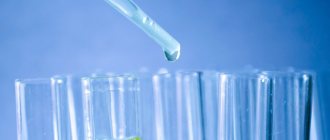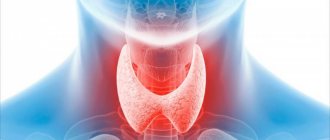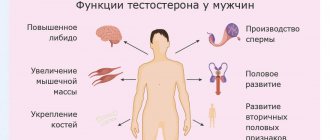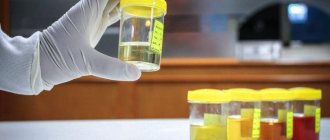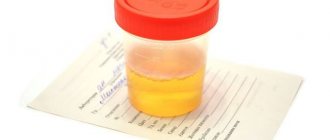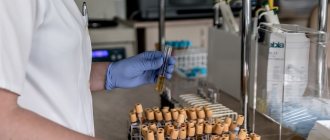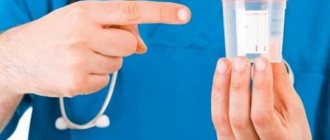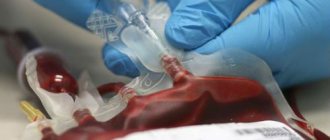Urinalysis according to Nechiporenko: indications, preparation, standards
No medical examination is complete without a urine test. A general urine test is perhaps one of the most frequently prescribed tests. And this is not just a tribute to medical tradition: using this method, you can obtain data valuable for making a diagnosis, prescribing and monitoring treatment. But sometimes a general analysis is not enough.
In what cases is a urine test according to Nechiporenko prescribed? What kind of research is this? What is it for? Let's figure it out.
Urinalysis according to Nechiporenko - what is it?
If in a general urine analysis some changes were identified that make it difficult to make unambiguous diagnostic conclusions, then to clarify and detail them, a urine test according to Nechiporenko may be called.
It is performed with a microscope. In this case, the number of leukocytes, red blood cells, and so-called cylinders in 1 milliliter of urine is calculated.
Why is a urine test according to Nechiporenko prescribed?
Indications for its implementation vary. It is used to identify various inflammatory processes in the urinary system (kidneys, bladder, urethra); for the purpose of assessing kidney damage in a number of systemic diseases; to distinguish between urinary tract diseases; for the purpose of monitoring treatment.
Pyelonephritis: what is this disease and how to treat it? Urologist at Clinic Expert Kursk says:
Devyatkin Alexander Alexandrovich
What does the Nechiporenko test show?
A significant number of red blood cells may indicate damage to any part of the urinary system.
An increase in the number of leukocytes is observed during local inflammatory, infectious processes, etc. In such cases, it is additionally necessary to perform a urine test for the presence of bacteria in it.
In addition to erythrocytes and leukocytes, the study of cylinders is important. What are they? These are accumulations of protein that form from cells and cellular debris when the properties of urine change. The place of their formation is the renal tubules. There are several types of cylinders (epithelial, hyaline, etc.)
What are the reasons for the increase in this or that indicator?
Increased red blood cells in the urine. Looking for reasons
The number of red blood cells increases with urolithiasis; trauma, tuberculosis and kidney tumors; glomerulonephritis, severe pyelonephritis, etc.
The number of red blood cells can also increase in pathologies not directly related to the kidneys. These include hemophilia, benign prostatic hypertrophy, leukemia (leukemia), congestive heart failure, systemic lupus erythematosus and a number of others.
Following Queen Victoria's gene: what is hemophilia? The head of the hemostasis study group of the department for optimizing the treatment of hematological diseases of the Center named after. Dmitry Rogacheva, Doctor of Medical Sciences
Zharkov Pavel Alexandrovich
Leukocytes are elevated. Why?
An increase in their number in the urine is observed in acute pyelonephritis, glomerulonephritis, cystitis, kidney tuberculosis, bladder neoplasm, etc.
Cystitis: symptoms, diagnosis and treatment. Read more
Casts in urine. What does it mean?
Depending on their type, their number increases with intense physical activity, glomerulonephritis, heavy metal poisoning, acute and chronic renal failure, emotional stress, kidney damage due to diabetes, kidney tuberculosis, etc.
Ultrasound or MRI for kidney disease? The chief doctor of MRI Expert Yelets, Vladimir Vladimirovich Tulinov, tells
Preparation for urine analysis according to Nechiporenko
For 12 hours before the test, do not eat spicy, salty foods, as well as foods that change the color of urine (for example, beets, carrots).
For 48 hours before urine collection, stop taking diuretics (only after agreeing on this with your doctor).
How to properly collect urine for analysis according to Nechiporenko?
First, the external genitalia are toileted. An average portion of morning urine is collected.
How many days does it take to prepare a urine test according to Nechiporenko?
It depends on the workload of the laboratory. As planned - 1 working day.
Can urine for analysis be stored in the refrigerator?
The urine sample must be fresh. However, if the situation does not allow you to donate urine immediately before the test, you should store it in the refrigerator at a temperature of +2...+8°C. The total time of storage and delivery to the laboratory is no more than twelve hours from the moment the material is taken. It is necessary to clarify all these nuances in advance in the laboratory, clinic, etc., where the analysis will be carried out.
How to read the analysis correctly? Urine sample standards according to Nechiporenko
Normally the indicators are:
— leukocytes: 0 — 2000/ml
— red blood cells: 0 — 1000/ml
- cylinders: not detected
You can sign up for the study here or in the contacts section
Historical reference
This analysis was proposed by the Soviet military surgeon, urologist-oncologist Alexander Zakharovich Nechiporenko.
The birthplace of the future doctor was the Volyn province of the Russian Empire (today the Zhytomyr region of Ukraine).
A year before the start of the Great Patriotic War, Alexander Zakharovich graduated from the Kiev Medical Institute.
In the first years after the war, he trained in the field of thoracic surgery at the leading educational institution for training military doctors - the Leningrad Military Medical Academy.
Since the mid-60s he has been working at the Rostov Medical Institute at the Department of Surgery.
In 1967, Nechiporenko became the scientific director of the oncourological department of the Research Institute of Oncology and Medical Radiology in Rostov-on-Don. For more than 10 years he was the head of the urology course at the Medical Institute of Grodno (Belarus).
He is a pioneer of the method of removing the bladder for bladder cancer and removing lymph nodes for malignant neoplasms of the testicle.
He passed away in November 1980 at the age of 65.
General information
In most cases, this test is prescribed if the results of basic studies reveal irregularities or are questionable. The analysis determines the amount of important elements in the sediment. This makes it possible to confirm or refute the suspected diagnosis (for example, hematuria). The difference between this test and clinical analysis is that in the first case the elements are counted per unit volume, and in the second - in the field of view.
Indications for the study
Urinalysis according to Nechiporenko can be prescribed to both adult patients and children. Indications for its implementation include symptoms of urinary tract diseases, abnormal results of other tests, and a high risk of kidney damage (for example, in diabetes). The test may also be prescribed at certain intervals to monitor the progress of treatment. Pathologies of the kidneys and urinary tract can be suspected if there are symptoms such as pain in the lumbar region, difficulty urinating, a change in the usual smell or color of urine.
Collection of biomaterial
To exclude false results, 12 hours before the test you must avoid foods that color your urine, as well as salty and spicy foods. Diuretics are usually discontinued two days before the test. This is done only by the decision of the attending physician; unauthorized withdrawal of medications is unacceptable. To perform this test, an average portion of urine (morning or afternoon) is required. If urine is collected during the day, the period between urinations should be 4-6 hours.
Urine is collected in three sterile containers. The volume of the middle portion should be the largest. It is important to deliver the biomaterial to the laboratory no later than 2 hours after its collection.
Interpretation of results
The test is used as an auxiliary study, so its results are interpreted in conjunction with data obtained from other tests. Normally, one milliliter of biomaterial should contain up to 1 thousand units of erythrocytes, up to 2 thousand leukocytes and up to 20 cylinders of each type. Deviations from the norm indicate an inflammatory process or pathology. Based on the results, a specific disease can be identified. For example, an increase in red blood cells is usually accompanied by neoplasms in the urinary tract or kidneys. If the results obtained seem questionable to the doctor, the test is repeated. Interpretation of the results can only be done by a doctor. A large number of additional factors are taken into account.
An increase in the number of red blood cells can be caused by excessively intense physical activity. This is also observed in the case of trauma to the urethra with a catheter, and menstrual fluid entering the urine.
The test results can be affected by many medications. It is important to inform your doctor if you are taking any medications.
Urinalysis: rules for women
General rules
Morning urine obtained during the first urination after sleep is collected If you urinate several times during the night, then the morning urine that you can deliver to the laboratory no later than 2 hours after urination .
Before collecting urine, it is necessary to perform a thorough hygienic toilet of the genitals. Place a tampon in the vagina to prevent genital secretions from getting into the urine sample. It is advisable to collect urine (a medium portion) without interrupting urination.
Important! During menstruation, urine tests are not recommended, only in exceptional cases, on the recommendation of a urologist.
General urine analysis, urine analysis according to Nechiporenko
An average portion of urine is collected in a volume of 30-50 ml (from 1/3 to 1/2 of the container).
Urine tests for bacterial flora (urine culture)
An average portion of urine is collected in a volume of 30-50 ml (from 1/3 to 1/2 of the container).
Important! Urine for analysis is collected in a sterile container. It is necessary to open the protective packaging and unscrew the cap immediately before collecting urine. The inner edges of the container and lid must not touch parts of the body, clothing, or surrounding objects. After collecting urine, immediately close the container with a lid.
A urine test is always a mandatory test when a urologist detects pathologies in a patient. The chief physician of the Pozitivmed medical center talks about how a urologist’s appointment goes with both men and women.
Medical carries out all possible types of laboratory tests; to find out the cost, visit this page. Urine collection is carried out from 9:00 to 21:00. We recommend making an appointment by phone in advance.
How to take Nechiporenko
For research you will need to collect the so-called average portion. To do this, part of the urine is flushed down the toilet, then into the laboratory container, and the rest goes back into the toilet. If you need to analyze Nechiporenko’s urine in children, you need to pay special attention to the fact that it is collected without interrupting the urination process.
Another important point is the shelf life. According to Nechiporenko, urine should be sent to the laboratory almost immediately after collection. Taking into account travel time - no more than 1-2 hours.
Preparation for tests: Urine
List of instructions:
- Instructions for collecting urine for general analysis;
- Instructions for collecting urine for Nechiporenko research using a kit with a preservative;
- Instructions for collecting material for urine culture (for men);
- Instructions for collecting material for urine culture (for women);
- Instructions for collecting daily urine for biochemical tests;
- Instructions for collecting urine for alpha-amylase testing (portioned/daily urine)
Instructions for collecting urine for general analysis
In the INVITRO laboratory, urine for general analysis is accepted only in test tubes with a preservative. The preservative ensures the safety of the biomaterial for a long time and makes it possible to bring urine to the laboratory at any time convenient for the patient, which will not affect the accuracy of the results. A urine collection kit must be purchased in advance at any OMO Independent laboratory INVITRO. On the eve of the test, it is recommended not to eat vegetables and fruits that can change the color of urine (beets, carrots, etc.), and not to take diuretics.
Women are not recommended to take the test during menstruation. It is not recommended to take a general urine test and a urine test using the Nechiporenko method on the same day.
Before collecting urine, it is necessary to thoroughly clean the external genitalia. To carry out the study correctly, when urinating for the first time in the morning, release a small amount of urine (the first 1-2 seconds) into the toilet. Collect the entire portion of morning urine in a dry, clean container. Pour at least 50 ml of the total volume of urine into a container with a blue lid. Close the container tightly, insert the test tube with the preservative with a rubber stopper into the hole in the container with the blue lid, press and wait until urine stops flowing into the test tube. Remove the tube and invert it several times to better mix the urine with the preservative.
Deliver the test tube with urine to the laboratory during the day (according to the schedule for receiving the biomaterial).
Before shipment, the biomaterial must be stored in a refrigerator at +2...+8°C.
Attention! The urine sample should not be frozen.
Instructions for collecting urine for Nechiporenko research using a kit with a preservative
For this study, it is necessary to collect a strictly average portion of morning urine. Before collecting urine, it is necessary to perform a thorough hygienic toilet of the genitals. Women are not recommended to take a urine test during menstruation.
To carry out the study correctly, during the first morning urination, release a small amount of urine (the first 1 - 2 seconds) into the toilet, and then, without interrupting urination, place a special container (with a blue lid) for collecting urine, into which to collect approximately 50 ml, the rest urine in the toilet.
Close the container tightly, insert the test tube with the preservative with a rubber stopper into the hole in the container with the blue lid, press and wait until urine stops flowing into the test tube. Remove the tube and invert it several times to better mix the urine with the preservative.
Deliver the test tube with urine to the nearest medical office.
Instructions for collecting material for urine culture (for men)
The study requires an average portion of urine.
It is necessary to purchase in advance at any medical office of the Independent Laboratory INVITRO a container with a blue lid and a vacuum tube with a preservative (a kit for collecting urine for microbiological research).
Important!!! Urine for research should be collected before starting antibacterial therapy and taking immunomodulators or 12-14 days after stopping taking medications.
It is necessary to collect the first morning urine, in which, after a long break between urinations, the largest number of bacteria is concentrated.
Before collecting urine, hygiene procedures are required to prevent bacteria from the sebaceous and sweat glands from getting into the urine. When taking material, sterility must be observed.
Prepare a container with a blue lid by opening the lid slightly so that it can be removed with one hand. Do not touch the inner walls of the container and lid with your hands.
Procedure for collecting material:
- Wash your hands with soap.
- Pull back the foreskin (if it is not circumcised), wash the head of the penis with soap and warm boiled water, and dry with a clean napkin.
- Prepare the container by opening the lid of the container so that it can be removed with one hand. Do not touch the inner walls of the container and lid with your hands.
- Release a small amount of urine into the toilet. Stop urinating.
- While holding the foreskin in a retracted position, direct a stream of urine into the container and fill it halfway, without touching the edges of the container.
- Carefully close the container with the lid.
- Insert the test tube with the preservative with the stopper into the hole in the container with the blue lid, press down and wait until urine stops flowing into the test tube.
- Remove the tube and invert it several times to better mix the urine with the preservative.
Deliver to the nearest INVITRO medical office on the day of collection (according to the schedule for receiving the biomaterial).
Before shipment, the biomaterial must be stored in a refrigerator at +2...+8°C. If immediate delivery to the Moscow Region is not possible, the material can be stored at +2...+8°C for no more than 10-12 hours.
Attention! The urine sample must not be frozen!
Material collected in several doses in one container over a period of more than 24 hours will not be accepted for research. As well as material collected in a urinal when a cysto- or nephrostomy is applied.
Instructions for collecting material for urine culture (for women)
The study requires an average portion of urine.
It is necessary to purchase in advance at any medical office of the Independent Laboratory INVITRO a kit for collecting urine for microbiological research (a container with a blue lid and a vacuum tube with a preservative)
Important!!! Urine for research should be collected before starting antibacterial therapy and taking immunomodulators or 12-14 days after stopping taking medications.
It is necessary to collect the first morning urine, in which, after a long break between urinations, the largest number of bacteria is concentrated.
Procedure for collecting material:
- Before collecting material, wash your hands thoroughly with soap and toilet the external genitalia with soap and water. To avoid vaginal discharge getting into the urine, it is recommended for women who are sexually active to insert a tampon into the vagina at the time of collecting the material.
- Remove the lid from the container and hold it in your hand, being careful not to touch the edges. Do not touch the inner walls of the container or lid with your hands.
- Keeping your labia apart, release some urine into the toilet. Stop urinating, and then, placing the container under the stream of urine, fill it to half capacity. Do not touch the container to your body.
- Close the container carefully with the screw cap.
- Insert the test tube with the preservative with the stopper into the hole in the container with the blue lid, press down and wait until urine stops flowing into the test tube.
- Remove the tube and invert it several times to better mix the urine with the preservative.
Deliver to the nearest INVITRO medical office on the day of collection (according to the schedule for receiving the biomaterial).
Before shipment, the biomaterial must be stored in a refrigerator at +2...+8°C. If immediate delivery to the Moscow Region is not possible, the material can be stored at +2...+8°C for no more than 10-12 hours.
Attention! The urine sample must not be frozen!
Material collected in several doses in one container over a period of more than 24 hours will not be accepted for research. As well as material collected in a urinal when a cysto- or nephrostomy is applied.
Instructions for collecting 24-hour urine for biochemical tests
The day before the study and on the day of submitting the biomaterial, exclude diuretics (diuretics), after consulting with your doctor. On the eve of the study and during its conduct, it is necessary to exclude emotional stress and physical activity (sports training), and alcohol intake. The day before collecting urine, you should not eat foods that can color it (for example, beets, carrots, etc.). You should also avoid eating spicy foods.
Procedure for collecting material:
- It is necessary to purchase a sterile container (SCC) in advance from any OMO Independent Laboratory INVITRO or pharmacy.
- When you wake up in the morning, empty your bladder (this portion of urine is poured into the toilet). Record the time you urinate.
- All subsequent portions of urine excreted over the next 24 hours (i.e. during the day, night and the first morning portion of the next day) are collected in one clean container (2-3 liters), which is stored in the refrigerator (+2…+ 8°C) during the entire collection time. The last urination should be carried out 24 hours from the time noted the day before.
- After completing urine collection, the contents of the container must be accurately measured, be sure to mix and immediately pour 50 ml into a sterile container (up to half the volume of the container). You do not need to bring all the collected urine.
- It is necessary to indicate (on the container, referral form) the daily volume of urine (diuresis) in milliliters, for example: “Diuresis 1250 ml”, and also write down the patient’s height and weight.
The container must be delivered to the nearest INVITRO medical office (according to the schedule for receiving the biomaterial).
Instructions for collecting urine for alpha-amylase testing (portioned/daily urine)
It is necessary to exclude diuretics (diuretics), after consulting with your doctor.
On the eve of the study and during its conduct, it is necessary to exclude emotional stress and physical activity (sports training), and alcohol intake. The day before collecting urine, you should not eat foods that can color it (for example, beets, carrots, etc.). You should also avoid eating spicy foods.
Procedure for collecting material:
- It is necessary to purchase a sterile container (SCC) in advance from any OMO Independent Laboratory INVITRO or pharmacy.
- When you wake up in the morning, empty your bladder (this portion of urine is poured into the toilet). Record the time of urination.
- All subsequent portions of urine excreted at any time period (1 hour, 2, ..., 12 hours, etc.) should be collected in one clean container (2-3 liters), which should be stored in the refrigerator at + 2 ... + 8 ° C during the entire collection period.
- After urine collection is completed, the contents of the container must be accurately measured, be sure to mix and immediately pour 30-50 ml into a sterile container. Record the time of your last urination. You do not need to bring all the collected urine.
- It is necessary to indicate (on the container, referral form) the measured volume of urine (diuresis) in milliliters, for example: “Diuresis 350 ml”, and the time of urine collection in hours is also required, for example: “1 hour”.
Attention! If you need to collect a single morning portion of urine: collect the entire morning portion of urine in a container, measure the volume and immediately pour 30-50 ml into a sterile container with a lid. Indicate the time elapsed from the last evening urination to the morning (in hours). For example: “Diuresis 350 ml”, “8 hours”.
The container must be delivered on the day of completion of urine collection to the nearest OMO Independent laboratory INVITRO (according to the schedule for receiving biomaterial).
